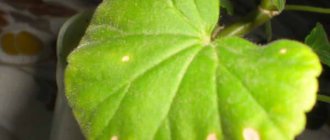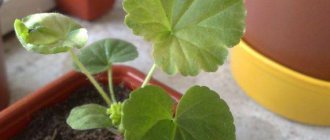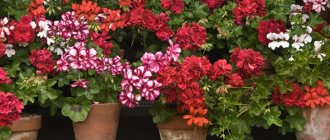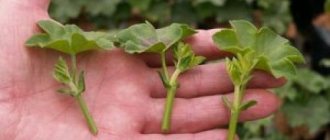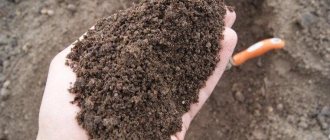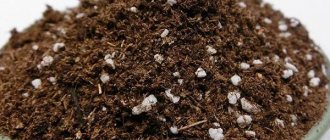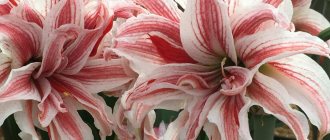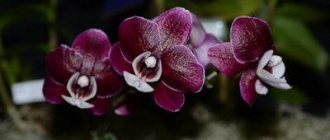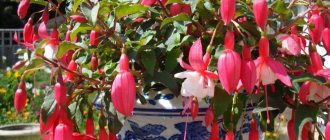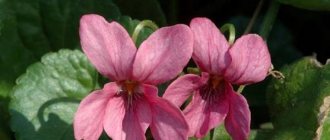Pelargonium from the geranium family is called indoor geranium by almost all gardeners. There is also outdoor geranium, which differs from pelargonium in the shape of leaves and flowers, resistance to frost, method of reproduction and growing area. You can learn about the difference between pelargonium and geranium on our website from the article “What is the difference between geranium and pelargonium“.
Indoor and outdoor geraniums are always dotted with flowers, growing alternately and emitting an aroma that cannot be confused with the smell of other flowers. Their leaves are also endowed with a special aroma. Because of this, both plants are used by the cosmetic industry to obtain essential oils. However, these plants should not be left unattended during development, growth and flowering, as they may be susceptible to disease and damage from pest infestations.
But geranium diseases (see photo) and their treatment are similar for both indoor and outdoor representatives. This will be discussed in detail in this article, as well as disease prevention measures.
Typical diseases of geranium
Diseases of geranium can be noticed by yellowed and drying leaves, the appearance of rust, spotting, swelling, lack of flowering, bacterial, fungal damage, root rot and viral infections. Let us consider the main diseases and methods of their treatment in more detail. If there are violations during care, geranium (pelargonium) appears:
Yellowness on leaves
We need to find out why geranium leaves lighten, turn yellow and wither, and then take resuscitation measures. This may be due to a lack of fresh air in the room, drafts, excessive watering or moisture deficiency, excess nitrogen in the soil or lack of micronutrients. The parameters of the pot also play an important role in the life of the plant. A narrow pot aggravates the development of the root system, so not only the leaves, but also other parts of the geranium die off. But if, with normal care, the leaves of a geranium turn pale, the reason can be determined by the development of the root system: if root rot has appeared or a mealybug is parasitizing, the leaves will turn yellow and dry out.
It is important to know! If the plant has just been replanted, and the leaves at the bottom of the bush begin to turn yellow, then this is considered a side effect. The yellow parts are removed, and the geranium continues its development.
No flowering
Geraniums are grown for their spectacular, large and beautiful flowers. It stops blooming in the presence of causative factors:
- insufficient lighting;
- low temperature;
- too large a container: roots grow intensively, flowering slows down or is absent;
- excess fertilizer;
- lack of nutrition in the soil;
- thickening of green mass, in the absence or insufficient pruning;
- root rot and scale insects.
To resuscitate a plant, you need to eliminate all negative factors and cure the root system.
Dried leaves
Why do geranium leaves have small leaves and dry edges: there is not enough moisture in the soil. When dry:
- flower - a fungal disease has appeared;
- leaves and the appearance of wet areas on the stems - stem rot has begun;
- lower leaves along the edges - there is not enough nutrition or old leaves are dying.
Fungi are eliminated by treating them twice with Fitosporin (a break of 7 days between treatments) and watering the plant with 5% Bordeaux mixture.
Botrytis mushroom
The fungal disease appears on the plant as gray spots, then brown and fluff; all parts of the bush wither when exposed to excessive moisture. How to treat geranium if the leaves are brown, rot and fall off:
- clear the soil of weeds and dry plant fragments;
- loosen the soil so that it absorbs water well, passes excess through drainage and dries out;
- remove and destroy parts of the bush affected by the fungus;
- treat geranium with fungicides.
Recommendation! The soil absorbs water well, allows it to pass through, and dries out during the morning spill no later than 11 o’clock.
Root rot
The activity of the fungus leads to yellowing of the leaf plates. Later, brown and even black spots appear on the leaves of indoor geranium. On the plant itself you can notice a light coating in the form of a cobweb due to advanced root rot and/or root worms. To get rid of rot, the following work is carried out:
- loosen the soil;
- exclude fertilizers with nitrogen;
- remove and destroy diseased stems with leaves;
- apply fungicides to waterlogged soils;
- for root bugs: cut off parts of the affected roots with a knife, and place healthy ones in hot water, dry them and sprinkle them with charcoal flour, then transplant the bush into new, sterile soil;
- for mealybugs: pelargonium is isolated and the parasites are removed by hand and sprayed with a soap-alcohol mixture. In advanced stages, they are treated with insecticides: Actra, Actellik or Fufanon.
If root rot has slightly affected the roots, the bush should be removed from the pot, washed well, then treated with such agents as Hom, Oxychom, Fundazol or Pervikur.
Leaf rust
Why do the leaves of indoor geranium turn red and pale green spots with red dots and rusty-yellow zones form? Fungal spores collect in pads and when they open, they are carried by gusts of wind from an open window or drafts. In the final stages, the flower rots and turns black, withers and dies. The plant can be revived only in the initial stages, before blackening appears. For this:
- remove weeds and dead parts on the bush;
- carry out bottom watering;
- treated with fungicides.
Bacterial diseases
As a result of their vital activity, microbes leave dark yellow, brown and black triangular spots on the leaves, which leads to drying and wilting of the plant. To eliminate bacteria, you must:
- clean the soil or even replace it with quality soil;
- water pelargonium in the morning;
- treat with fungicides;
- for pelargonium - use fungicides; for street geranium - there is no need to use them.
Viral diseases
Viral diseases of ivy-leaved pelargonium and other species cause cessation of stem growth and the formation of brown-purple round spots on the leaf blades. Viral infections are treated like bacterial ones, but at the same time they fight insects that carry pathogens.
spotting
Bubbles and spots under the leaf blade are called Alternaria blight. After yellowing, the leaf gradually fades and falls off. Spots in the form of pale sunken areas, then gray and brown, also appear with cercospora. Such lesions tend to rise in the center. For the purpose of resuscitation, diseased leaves are removed, shoots are thinned out and treated with fungicides.
Edema
How to save geraniums from wilting due to swelling: light green, then brown bladderwort on the leaves, filled with liquid:
- reduce the frequency and dose of watering the flower to avoid excess moisture;
- increase air and soil temperatures.
If the pot is over-moistened or kept without drainage, or if there is an excess or lack of microelements in fertilizers and light, pelargonium (geranium) may also die.
Care Tips
When purchasing geraniums, experts recommend looking for plants with healthy leaves, no spots on top or bottom, and no rough stems that indicate the specimens grew in poor light. Let's look at some additional tips for caring for geraniums.
- For best growth and flowering, geraniums need at least six hours of sunlight every day. It must be protected from freezing. During the hottest part of summer, plants feel best in the afternoon.
- When planting in the garden, plant the plants about 25cm apart in fertilized garden soil.
- Fertilize geraniums every two weeks and water them when the soil is dry to a depth of 2 inches. Remove old flowers to keep plants looking fresh.
- If the garden is not too sunny, you can still enjoy the flowers. You will just have to move the pots into the sun from time to time.
- Choose containers with drainage holes at the bottom or sides. Plant the plants in an ultra-light mix with plenty of peat and vermiculite. Geraniums need good drainage, but avoid using a saucer under the pot. Allow the water to drain completely.
If you want to keep a healthy flower and help it survive the winter, then these recommendations can be applied here.
- Take cuttings in the fall, and in winter keep them in small pots on a south-facing windowsill.
- The old method of overwintering geraniums is to dig up the plants before the first frost, knock the soil from the roots and hang the plants upside down in a cool room with 80% humidity and a temperature of +5 degrees. If the plants begin to dry out, soak the roots in water several times each winter. In the spring, cut the plants, cut off half of the top and replant in open ground.
To learn about the diseases and pests of geranium, see the following video.
Treatment of diseases
Blackleg. The stem darkens and rots. Infected cuttings are pinched off and the cut top is rooted.
Gray rot . It occurs on peduncles, leaves and stems. For resuscitation, remove all rotten parts, temporarily do not water or feed the geranium. Treatment is carried out with solutions: Fundazol or Vitaros.
Late blight (late blight). Fungal spores enter the plant from the soil, tubers, and plant tops. Indoors, spores are transferred to other flowers from the leaves by drafts. The cause of the fungus is excess moisture and dense soil. The soil in the pot needs to be updated and the pelargonium treated with such products as Ridomil, Previkur or Profit Gold. In winter, the flower indoors is set to the lowest possible temperature and the number of waterings is reduced. Equipment and pots after diseased bushes should be thoroughly sterilized.
Chlorosis . With a deficiency of iron and/or manganese, geranium may develop chlorosis. Then growth slows down and the color of the leaves changes. The bush needs to be transplanted into fresh soil and fertilized with a full complex of mineral fertilizers.
Etiolation. Low lighting leads to elongation and deformation of the trunk, smaller leaves and loss of their former color. In summer, the flower pot should be placed on the sunny side, but provided with partial shade during the daytime sun. In winter, artificial lighting will be required.
Eden . Even when absorbing water from waterlogged soil, pelargonium does not completely evaporate all excess. Then she gets edema. To prevent this from happening, you need to provide it with drainage not only in the pot, but also place a tray with expanded clay or broken bricks under it. After drying the soil, reduce the number of waterings and regularly ventilate the room.
It is important to know! Leaves turn yellow when there is an excess of nitrogen in fertilizers, and dry out as a result of oversaturation with phosphorus. It is necessary to replant the geranium in fresh soil, limit nutrients with these microelements, and add stimulants to the soil: zircon or epin. Do not oversaturate the soil with herbicide when fighting weeds and with fungicide when treating rot. These drugs worsen the life of the plant and lead to loss of foliage.
Prevention and care at home
Basically, all ailments of a houseplant arise due to irregularities in care (read about the features of caring for pelargonium at home here). Pelargonium needs fresh air . Ventilate the room regularly. This is the prevention of fungal diseases. Maintain a comfortable temperature regime, control lighting and soil and air humidity. Feed the soil periodically and inspect the plant for parasites.
Geraniums get sick if they are not properly cared for or as a result of infection by a fungus, bacteria or virus. Water your indoor beauty, avoiding overwatering and drying out, do not forget to feed the plant in a timely manner, provide proper lighting and regular ventilation of the room - and then pelargonium will delight you with its beauty for a long time (how to water and how to feed pelargonium?).
Control of parasites
Inadequate care makes pelargonium weak, and then it is “attacked” by various kinds of insects. Geranium pests and measures to combat them:
- Root mealybug . Waterlogged soil is a comfortable environment for the parasite, and geranium roots are its favorite food. After checking the root system, you need to cut off the areas with scale insects with a clean knife, and keep the healthy roots in a container with hot water for 2-3 minutes, then dry them and sprinkle them with charcoal powder. The bush is transplanted into another pot with sterile soil. The first pot must be doused with boiling water and treated with a sterilizing agent, just like a garden knife.
- Mealybug. Sometimes a novice gardener cannot understand who is eating the geranium leaves on the window. If white sticky lumps appear on the leaf blades and other parts, then this is a mealybug. The diseased flower should be isolated and the parasite removed manually, and then sprayed with a soap solution and alcohol. Advanced stages of damage by parasites require treatment with insecticides: Actellik, Aktara or Fufanon.
- Spider mite. Spider mites on geraniums gnaw through the skin and suck juices from leaves, stems, buds and petals. It spreads gray mold and viruses. All damaged parts are removed from the plant, removed from the pot and the stems and leaves are washed thoroughly under a warm shower with a soft sponge. After this, treat with a thick soap solution and do not wash it off for half a month, covering the bush with a bag. Then rinse thoroughly with warm water. Pots, trays, and flower stands must be treated with boiling water. Ticks can also be on window sills, frames, and in window cracks, so they should be washed with a solution of water and laundry soap, then treated with alcohol, and the curtains should be washed. Ticks do not like yarrow and garlic tinctures. To prepare an infusion of yarrow, grind 400 g of the dry plant and pour 1000 ml of boiling water. After 10 minutes, dilute with another 5 liters of water. Leave in a dark place for 2-3 days and treat the bush 3 times with a break of several days. For garlic tincture, you will need 180 g of product per 1000 ml of warm water, let the composition brew in a dark place for 7-8 days, then treat the bush by mixing 1 liter of water with 10 ml of tincture. Naphthalene, dichlorvos or turpentine are often used: naphthalene tablets or cotton wool soaked in a toxic agent are placed next to the pot, in a tray, then the bush is sealed with a plastic bag for 2 days, securing the bag with rubber bands or clothespins. The parasite will die during this time.
- aphids on geraniums at home: shoots and leaves will curl and become deformed; they need to be cut or removed manually.
- Whitefly. It develops vigorous vital activity on the reverse side of the leaves. It is removed with the drug Actra.
- Caterpillar. It lays larvae and makes many holes in the leaves. The drugs Senpai or Lipidocide will help rid the flower of parasites.
Identification of diseases and pests of pelargonium
Identification of diseases and pests of pelargonium
Post by Passific » Dec 20, 2010, 03:20 pm
Identification of diseases and pests of pelargonium
I translated this information personally (perhaps unsuccessfully in some places) and the photos, taken exclusively from the NC STATE UNIVERSITY documentation, have been edited for viewing. I'll start the topic with the Pelargonium Diseases Guide Wilt Disorders Dr. Brian E. Whipker, Department of Horticultural Science
A number of diseases and physiological disorders can cause wilting in pelargoniums. This sign raised doubts and the pelargonium was submitted to the diagnostic center to determine the cause. Symptom - Leaf wilting is caused by the bacterium Ralstonia solanacearum
Initial signs of solanacearum Ralstonia wilt
The leaves are similar in structure to that of an umbrella
Stage: Moderate signs of wilting solanacearum Ralstonia
Re: Identification of disease in pelargoniums
Post by Passific » Dec 20, 2010 3:23 pm
The first signs of progress are when the leaves begin to turn yellow. The source of this bacterium can be water, soil, or during pinching or pruning.
Progressive signs
And here, in fact, is the result of the life activity of Ralstonia
Institute RECOMMENDATIONS: place the plant in a plastic bag, isolate and destroy.
From myself: I encountered this problem this hot summer. The wilting began from the bottom row; I looked around and was stunned. At first glance, it seemed like the plant had not been watered, but the soil was moist, and the roots were indeed normal. I didn’t know anything about this bacterium yet, so I acted intuitively. Of course, I took it out of the pot, thought I had flooded it and dried it, but it didn’t help. Then I just cut off the top and rooted it. And I threw away the mother liquor itself. It’s good that the top has re-rooted and the variety has been preserved, and how good it is that I threw away the queen cell. And after reading this article, I understand that I did everything right. And signs of wilting in the cuttings were not observed subsequently.
Just a tip: notice, quickly re-root it, don’t wait for the leaves to turn yellow. And remember, such umbrella leaves can also occur due to lack of water.
Re: Identification of disease in pelargoniums
Post by Passific » Dec 20, 2010, 4:03 pm
A good example, on the Royal group (aggressive stage):
Re: Identification of disease in pelargoniums
Post by LIS a » 20 Dec 2010, 16:45
Re: Identification of disease in pelargoniums
Post by Olga Rasputina » Dec 20, 2010, 4:50 pm
Re: Identification of disease in pelargoniums
Post by AEA » 20 Dec 2010, 17:33
This is a very important comment. Marina, an article from a Spanish site about pelargoniums, right? We, residents of the middle zone, should not be afraid of this bullshit. Brown rot is a disease of warmer regions - the tropics and subtropics; it is not surprising that it appeared here last summer.
But the princess in the photographs, in my opinion, is not sick, but simply flooded.
Re: Identification of disease in pelargoniums
Post by Passific » Dec 20, 2010, 5:59 pm
Identification of disease in pelargoniums
Post by Passific » Dec 22, 2010 01:15 pm
Thank God, I haven’t encountered this infection, but it’s better to be informed
Leaves are mainly affected. On their upper side, round, light green, blurry spots (0.5 cm in diameter) with small bright brown dots in the center are formed. The spots quickly increase in size, merge, and turn yellow. On the underside of the leaves, brown concentrically located pustules of the fungus, the causative agent of the disease, form on them. The spores contained in the pustules are dispersed and spread to new leaves of healthy plants. The disease causes yellowing and drying of leaves. Severe damage leads to the death of the entire plant.
Reddish-brown geranium rust pustules will begin as a small bump, and over time will develop into rings.
Re: Identification of disease in pelargoniums
Post by Passific » Dec 24, 2010 00:49
Xanthomonas (Fire blight)
Xanthomonas is spread by splashing water. Symptoms of leaf spot will continue to develop on other leaves.
Medicines for geranium
Geranium not only pleases with the beauty of its flowers and leaves, but also brings benefits. It is used as part of drugs that destroy bacteria, to treat runny noses and purulent wounds; the smell of the plant calms the nervous system.
To save your favorite flower from problems, the following medications are used for it:
- Aspirin - in case of detection of insects. The leaves are sprayed with a solution: one tablet is dissolved in 8 liters of water. Repeat the procedure after 20-25 days.
- Marathon - to kill insects. Water the soil with the solution a few days after planting the plant.
- Messenger. The product increases the immunity of geranium.
- Monterey. The product is sprayed to kill caterpillars on leaves and trunks.
Are you ready to travel?
Bringing flowers from the balcony
I will also recommend window sills to you.
This is how I usually do it. Before the flowers go into place in the room, they take a hot shower. What's good about it? Firstly, the plants look better after it. The shower washes away dust and pests, opens the stomata and helps the plant breathe. After a hot shower, flower growth becomes more active. It is also a good remedy for controlling pests of indoor plants. Another positive point is the washing out of excess salts, which settle in the soil with each watering (our water is not bad, as you know). And finally, if the plant was sick, a hot shower, as a rule, helps it gather itself and activate its vital forces (awakens dormant buds, activates root growth, etc.)
Then they “cool down” in the bathroom for another 3-4 hours, and only then, fresh and beautiful, they fall into place. Read more about hot showers and its rules in the forum.
How to replant geraniums from the street
So, let's find out how to properly transplant geraniums back from the street into a pot. The day before, you need to water the plants well - maybe even with some excess. Then we carefully dig up the bush along with a lump of earth and transfer it into a pot of a suitable size.
If the bush has grown and does not fit into its old pot, you can take cuttings from the plant and grow a new, young plant. Or divide the bush into several and plant them in several pots.
Then geranium again goes into the category of indoor plants. When transferred from open ground to a house, the death of some leaves is a completely natural and inevitable phenomenon. This is how the plant adapts to new conditions.
Preparing the soil for pelargonium
You can buy ready-made soil for pelargonium or mix 2 teaspoons of humus, 1 teaspoon of sand and 1 teaspoon of peat. The root system of the plant can become moldy if you take heavy and stale soil. The plant loves nutritious and loose soil. After replanting, the soil is not compacted; once a month, the top layer is additionally loosened. Geraniums require a high turf layer (minimum 2 cm).
Feeding pelargonium after transplantation
The plant accepts fertilizing with mineral compounds well. At the end of winter they begin to feed with potassium and phosphorus compounds. Nitrogen, on the contrary, reduces. This promotes abundant flowering in spring. Feeding is carried out once a month (in winter and autumn) and once a week (from early spring to late summer). Two weeks before transplantation into the house, feeding is stopped.
Alternaria blight
It is a serious obstacle to growing beautiful geraniums. The disease manifests itself as follows: brown spots with a light core appear along the edges of the leaves, on the petioles and on the surface of the leaf blade. With high air humidity, these spots have a velvety coating. The plant does not bloom, the leaves turn yellow and dry.
The pathogen is found in the soil. Infection is especially common in early autumn, when it is warm and humid.
What should you do to prevent the disease? You can keep the plant healthy if proper care is taken : sufficient ventilation, proper watering, loose substrate. The plant must be treated with drugs such as Skor or Ridomil Gold.
